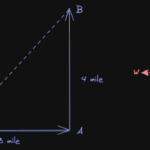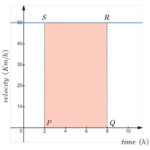Velocity and Acceleration
We know that velocity in physics is the rate of change of position with time and acceleration is defined as the rate of change of velocity with time.
There are formulas that can be used to calculate both these quantities. Velocity can simply be calculated if we have information about the displacement of the moving object in a certain amount of time.
But how do we calculate velocity from acceleration and what other physical quantities are needed to make these calculations?
Keep reading this article to get the answers to these questions.
Calculating velocity from acceleration
Finding it using acceleration and time
We know that acceleration of a moving object is given by the equation
$a=\frac{v_f-v_i}{t}\tag{1}$
where,
$a$ is acceleration
$v_f$ is the final velocity
$v_i$ is the initial velocity and
$t$ is the time taken
Above equation (1) can be rearranged to get a velocity-time equation i.e.,
$v_f=v_i+at$
This initial velocity can be set to zero if the object is not moving at the beginning.
So using the velocity time equation,
change in velocity can be obtained by multiplying acceleration with time and the required equation would be $v=at$
In this case, you need information about acceleration and time to calculate the final velocity. However, if the object under consideration is already moving then we need information about the initial velocity and time along with the acceleration and time at which we are required to find velocity.
Finding it using acceleration and displacement
From kinematics equations, we have a relation called the velocity displacement relation. This relation is given by the equation
$v_f^2=v_i^2+2as$
where,
$a$ is acceleration
$v_f$ is the final velocity
$v_i$ is the initial velocity and
$s$ is the displacement of the object
From this equation (2) we can see that if the initial velocity of an object is zero then we only need acceleration and displacement of the object to calculate its velocity. If the initial velocity is not zero then you can use its value along with the values of acceleration and displacement to calculate the final velocity.
For more information visit our article on Acceleration Formula with Velocity and Time
Solved Example on Calculating velocity from acceleration
Question: The velocity of a train is measured to be 40 Km/h at 10:00 AM. Find the velocity of the train at 10:02 AM when it is moving along a straight track with a constant acceleration of $300Km/h^2$.
Solution: We will solve this problem step by step
- Our problem has given us information about initial velocity and its time. So,
$v_i=40Km/hr$ and $t_i=10:00AM$
It is also given in the question that acceleration $a=300Km/hr^2$ and the time at which we have to find velocity is $t_f=10:02AM$
Total time elapsed is
$t=t_f-t_i=2 min=\frac{2}{60}h$
(here we have to convert minutes into hours) - To find velocity in this case we will use the velocity time equation.
$v_f=v_i+at$ - Putting in respective values in the above equation we get
$v_f=40\,Km/h +300Km/h^2 \times (\frac{2}{60}h)=50Km/h$




